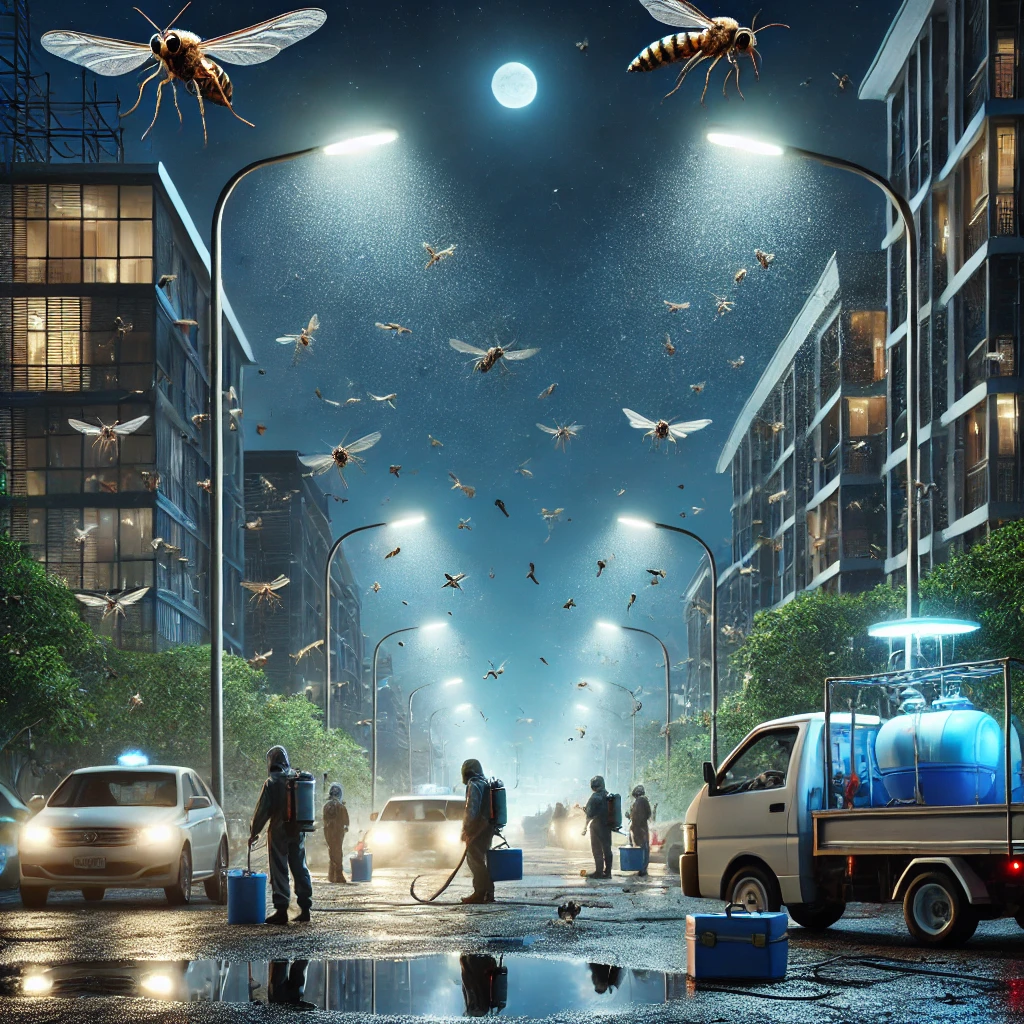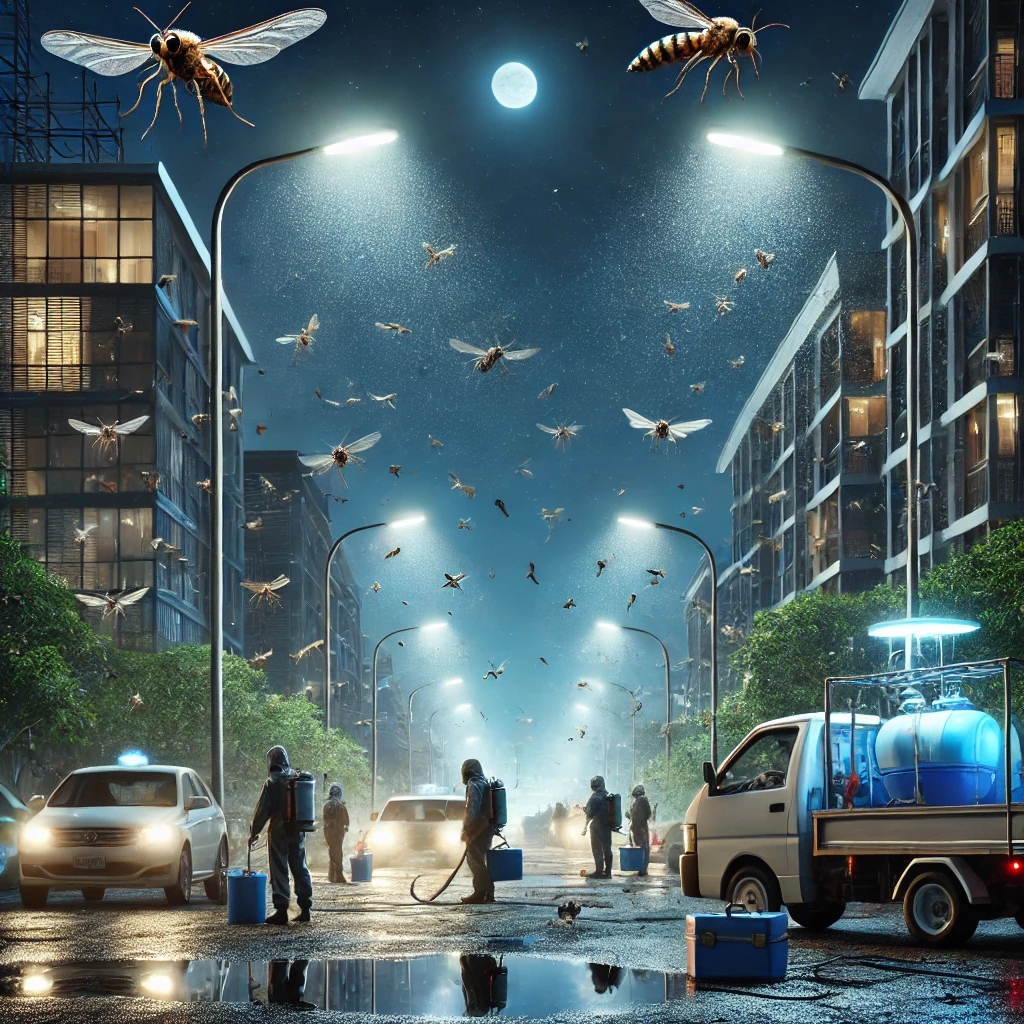
Introduction
Light pollution, the excessive or misdirected artificial light in the environment, has far-reaching effects on ecosystems, including pest behavior. Urbanization and increased use of artificial lighting have altered the natural behaviors of many pest species, complicating pest management strategies. Understanding these impacts is crucial for developing effective control measures that address both pest behavior and environmental considerations.
Effects of Light Pollution on Pest Behavior
Light pollution significantly influences pest behavior, particularly in nocturnal insects and other light-sensitive pests. Artificial lighting can attract pests such as moths, flies, and mosquitoes, increasing their presence in urban areas. This attraction, often referred to as the “phototactic response,” can lead to higher concentrations of pests around light sources, where they can damage crops, spread diseases, or become nuisances to humans. Additionally, light pollution can disrupt the natural rhythms of pests, affecting their mating, feeding, and migration behaviors, potentially increasing pest populations.
Impact on Predator-Prey Dynamics
Light pollution also affects predator-prey dynamics, indirectly influencing pest populations. Predators that rely on darkness to hunt may find it more challenging to catch prey under artificial lighting, leading to an imbalance in pest control. For example, bats and nocturnal birds, which feed on insects, may have reduced hunting success in brightly lit areas. This reduction in natural predation allows pest populations to grow unchecked, increasing the need for human intervention in pest management.
Challenges in Pest Control Strategies
Light pollution poses several challenges to traditional pest control strategies. The attraction of pests to light sources makes it difficult to target them effectively with conventional methods, such as traps or insecticides. Moreover, increased pest activity around artificial lights can lead to higher pesticide use, contributing to environmental contamination and resistance development in pest populations. Additionally, light pollution complicates the implementation of Integrated Pest Management (IPM) strategies, which rely on understanding pest behaviors to minimize chemical use.
Innovative Pest Control Solutions
To address the challenges posed by light pollution, several innovative pest control solutions have been developed. One approach involves modifying artificial lighting to reduce its attractiveness to pests. Using yellow or red lights, which are less appealing to insects, can decrease pest concentrations around light sources. Additionally, installing motion-activated lights or using directional lighting can minimize unnecessary illumination and reduce its impact on pest behavior. Advanced technologies, such as smart lighting systems, can adjust light intensity and color based on real-time conditions, further mitigating the effects of light pollution on pests.
Future Directions in Managing Light Pollution and Pests
Future pest management strategies will likely focus on integrating lighting modifications with other control measures to create a comprehensive approach. Research into the specific wavelengths of light that affect different pests will inform the development of more targeted solutions. Collaboration between urban planners, lighting engineers, and pest management professionals will be essential to designing environments that minimize light pollution while effectively controlling pests. Continued advancements in smart technology and data analytics will also enhance the ability to monitor and manage light pollution’s impact on pest behavior.
Conclusion
Light pollution has a significant impact on pest behavior, complicating traditional pest control strategies. By understanding these effects and developing innovative solutions, it is possible to mitigate the challenges posed by artificial lighting. Integrating lighting modifications with comprehensive pest management approaches will help create environments that balance the needs of human activity with ecological sustainability.

